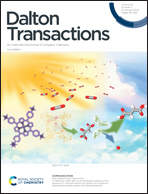PdMo bimetallene nanozymes for photothermally enhanced antibacterial therapy and accelerated wound healing†
Abstract
Although antibacterial platforms involving nanozymes have been extensively investigated, there are still problems of poor reactive oxygen species generation efficiency and obstinate bacterial biofilms. Developing a nanozyme-photothermal therapy nanoplatform with superior sterilization effects and minimal side effects would be a good alternative for completely eliminating bacteria and biofilms. Herein, an ultrathin PdMo bimetallene nanozyme with a planar topology and boosted metal utilization, exhibiting excellent photothermal and peroxidase-like activity, is designed for synergistic nanozyme-photothermal sterilization applications and accelerated wound healing. The superior catalytic activity of PdMo bimetallene nanozymes could convert a biosafe concentration of hydrogen peroxide (H2O2) into large quantities of toxic hydroxyl radicals (•OH) under laser irradiation, enhancing bacterial membrane permeability and thermal sensitivity for efficient removal of bacteria and biofilms. In addition, PdMo bimetallene presents a good wound-healing ability according to the results of fibroblast proliferation and collagen deposition with minor side effects. This work would provide an innovative avenue for developing metallene-based nanozymes for biomedical applications.



 Please wait while we load your content...
Please wait while we load your content...